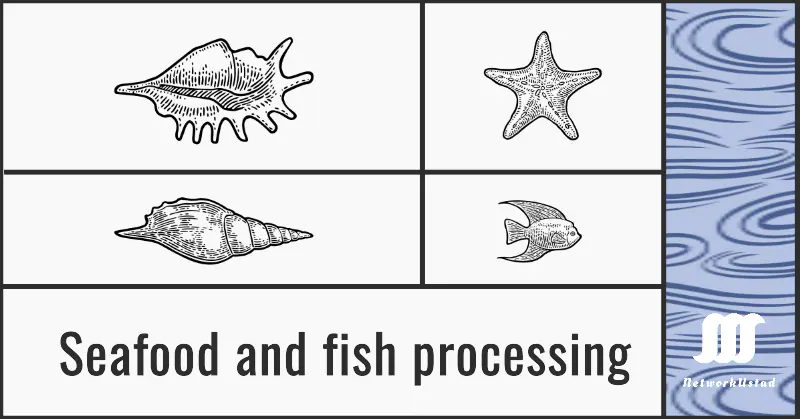Seafood and fish processing guide : From Catch to Consumer
Fish and seafood processing is a cornerstone of the global food industry, transforming fresh catches into safe, market-ready products. From ocean trawlers to supermarket shelves, here’s how innovation and tradition merge to deliver quality seafood.
WHAT IS FISH PROCESSING?
Fish processing refers to the methods used to prepare seafood for human consumption. After harvesting, fish undergo critical steps to ensure freshness, safety, and shelf stability. Key processes include:
- Gutting and filleting to remove inedible parts.
- Sorting by species and size for uniform quality.
- Packaging in materials that lock in freshness.
Fish is highly perishable and degrades rapidly without proper handling. Modern processing combines temperature control, automation, and rigorous hygiene standards to preserve flavor and nutrition.
The Fish Processing Pipeline: Step-by-Step
- Sorting & Grading
Fish are classified based on species, size, and quality. Automated systems use sensors to streamline this step, reducing human error. - Mechanical Cleaning
Machines remove heads, scales, and entrails. For example, salmon processing lines use high-pressure jets to peel skin efficiently. - Preservation
- Chilling: Fish are flash-frozen at -30°F to halt bacterial growth.
- Vacuum Sealing: Removes oxygen to prevent oxidation and spoilage.
- Salting/Smoking: Traditional methods that enhance flavor and shelf life
Quality & Safety: Battling Spoilage
To combat degradation, processors use:
Microbial Checks
HACCP protocols monitor critical points, like pasteurizing canned tuna to kill pathogens. Ary dramatically depends on a company’s size and the fish species it handles.
Temperature Control
Raw fish are iced immediately after catch and kept at 32°F during transport. Freezing extends shelf life up to 12 months.
Moisture Management
Drying or smoking reduces water activity, inhibiting microbial growth.
Oxygen Deprivation
Vacuum packaging prevents oxidation, preserving color and texture.
Sustainable Waste Management: From Trash to Treasure
Over 50% of fish biomass becomes waste. Forward-thinking plants now convert byproducts into:
- Fishmeal for livestock feed.
- Omega-3-rich oils for supplements.
- Fertilizers from bones and scales.
Wastewater is treated via:
- Primary Treatment: Removes solids through sedimentation.
- Secondary Treatment: Uses bacteria to break down organic matter.
- Tertiary Treatment: Advanced filtration for eco-safe discharge.
Why Automation Matters
Large-scale facilities rely on:
- Robotic filleters that maximize yield.
- AI-powered sorting systems to detect defects.
- Blockchain traceability to track seafood from boat to plate.
Smaller operations blend manual skill with tools like descalers and bone removers, ensuring artisanal quality.
The Future of Fish Processing
Innovations like
- Edible coatings to replace plastic packaging.
- High-pressure processing (HPP) to kill microbes without heat.
- Upcycled fish waste for biofuels.
Are reshaping the industry, balancing efficiency with sustainability
Key Takeaway
Fish processing is a blend of science and tradition. The industry delivers safe, nutritious seafood while reducing its environmental footprint by prioritizing temperature control, waste valorization, and automation.
